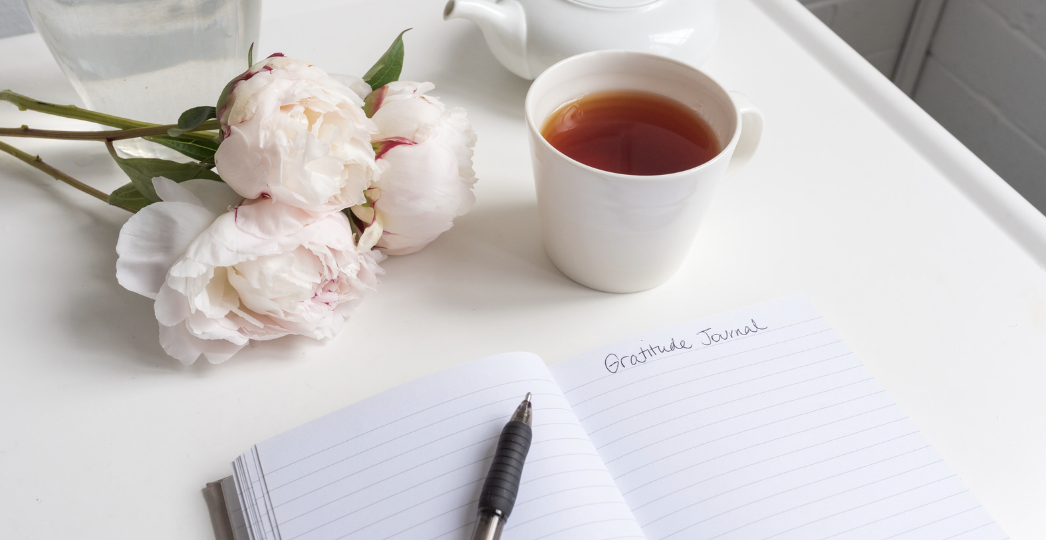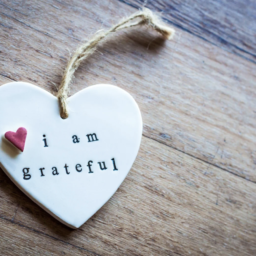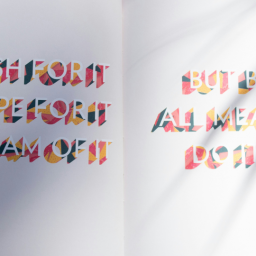
 ICYMI: gratitude has positive long-term effects on the brain. At the neurotransmitter level, practicing gratitude can activate specific neural circuits that surge dopamine and serotonin production. These “feel good” neurotransmitters then travel the neural pathways to the brain’s “bliss” center, increasing feelings of happiness and contentment. The changes in neurotransmitters and hormones combined with the activated neural pathways allow us to restructure potentially harmful thoughts cognitively.
ICYMI: gratitude has positive long-term effects on the brain. At the neurotransmitter level, practicing gratitude can activate specific neural circuits that surge dopamine and serotonin production. These “feel good” neurotransmitters then travel the neural pathways to the brain’s “bliss” center, increasing feelings of happiness and contentment. The changes in neurotransmitters and hormones combined with the activated neural pathways allow us to restructure potentially harmful thoughts cognitively.
We’ve all heard the saying, “practice makes perfect.” Well, the more we activate our gratitude circuits, the less effort it takes to stimulate those pathways the next time — and the stronger those pathways become. This is the concept of neuroplasticity, which refers to our brain’s ability to form new neural connections over time. In short, gratitude is something anyone can practice and utilize to better manage their circumstances.
Since rewiring the brain in this specific way doesn’t happen overnight, we’ve called in two local gratitude gurus to break down how they’ve honed their practice. And if you’d like to start a gratitude journal of your own, keep reading.
Reframing Gratitude Journaling

If you’re a person who understands the importance of intentionally practicing gratitude but gets caught up in the “writing it down” part — this one’s for you. According to CEO and Wellness Coach at H & L Wellness, Jasmine Allen, you can always simplify your practice.
“I really love to journal gratitude, and it’s what I encourage my clients to do — but as a wife, mom of 1-year-old twins, and a business owner, I don’t always have time to sit down and write,” she says. “In these instances, I love to write one word down on a sticky note and keep it in front of me. Maybe I’m manifesting over that word, praying over that word, or just figuring out what that word means to me. This is why I really like vision boards. It doesn’t matter if it’s on a piece of paper, electronic, displayed on a corkboard — whatever. Gratitude is all about finding the joy in things and putting it right there in front of you.”
Also, instead of sitting down and disciplining yourself to write a list of things you’re grateful for, you can allow gratitude to fold seamlessly into your life.
Licensed Therapist and host of the Don’t Cut Your Own Bangs podcast, Danielle Ireland, reminds us that, while journaling gratitude is a beneficial practice (she even created her own journal as a guide!), there are some great alternative ways to put gratitude right in front of you.
“When it comes to gratitude, I think oftentimes we think of everything to be grateful for outside of us and forget to be grateful for ourselves. This is why I love mirror work. Intentionally pausing in front of a mirror, looking into your own eyes, and saying something as simple as ‘thank you’ is enough!” she says. “It’s okay to applaud yourself for getting up, brushing your teeth, and doing all the day-to-day things. Take the time to acknowledge and be grateful for all that YOU do.”
And don’t be afraid to prompt those around you (preferably those you really trust) by asking, “what do you like about me?” While it may initially seem like a vulnerable ask, you’re opening yourself up for someone else to show gratitude towards you. It’s a quick, easy, and confidence-boosting way to shine a light on new ways you can be grateful for yourself.
The Differences Between Gratitude & Toxic Positivity
With all this talk of gratitude, it’s important to note the differences between healthy gratitude practices and infamous toxic positivity. While being intentionally grateful allows us to reflect on life’s gifts and cultivate an appreciation toward them — toxic positivity demands we view ALL experiences in a positive light.

The thing to remember, especially in the case of tragic circumstances, is that you may not see anything to be grateful for at first. As Danielle puts it, “gratitude does not need to replace grief,” and fleshes out this point by referencing a lost pregnancy she experienced a few years prior:
“Of course, when I experienced my miscarriage, I was not grateful for what had happened and how that felt. It was excruciating, and I’m still working through it. With any kind of grief — getting through it is sitting through it,” she says. “I think it’s important that we don’t try to access gratitude too quickly.”
Two things can be true: We can practice gratitude and also admit that certain circumstances are far from perfect. The only thing toxic positivity does is try to deny the existence of negative feelings, making us inevitably unable to process them.
“I think I want people to know you don’t have to go looking for gratitude when horrific things happen. Sometimes only time can uncover gratitude,” Danielle explains. “For me, it took a long time, but I could eventually find gratitude in the fact that the loss of my pregnancy made it crystal clear to me that I wanted to have kids. And now I do. And I’m so grateful for that.”
By understanding the differences between gratitude and toxic positivity, we can stay grounded in a realistic view of life’s events — both positive and negative.
Starting & Maintaining Your Journal
Right here, right now, what are some things you’re grateful for? Is it the change of seasons? Is it your pet sleeping in your lap? The meal you prepared for yourself recently? How the weekend makes you feel? Your smile? The smile of someone you love?
While you may be thinking bigger (your house, your job, your life) when it comes to gratitude, Jasmine is here to remind us that even those small moments can make a big impact, too.
“A lot of people think gratitude has to be this grandiose thing; it doesn’t. The way I look at gratitude is that it helps to start in the present. It may sound cliché, but you can be thankful for those seemingly tiny instances when sunshine hits your skin or the breeze blows through your hair. If you’re thankful for even the smallest things, chances are you’ll feel even more grateful for the bigger things.”
Gratitude is the essence of thankfulness. When you feel that ping of gratitude surface, take time to acknowledge it — whether it be to yourself in your journal or to someone else. This continual practice will condition your brain to lean more towards a gracious mindset. Once you begin noticing all the times gratitude shows up in your life, journaling exercises become much less daunting.
So, how do you maintain the practice once you’ve wrapped your mind around it? Jasmine says the secret to honing your gratitude practice revolves around two things: consistency and accountability.
“A lot of times, people think consistency means you have to do X, Y, and Z every single day — but that’s not it! Finding what consistency means to you AND a gratitude practice that works for your lifestyle is key to maintaining the practice. Also, make sure you find an accountability partner, whether it’s a spouse, friend, or professional.”
It’s always okay to ask for help, and now you know two Indy-centric gratitude professionals who are up to the task:
You can learn more about Jasmine and H & L Wellness here. She is always taking new clientele for Wellness Coaching and offers a free 15-minute discovery call to those interested in learning more about her services. You can follow H & L Wellness on Instagram.
Danielle’s website can be found here, and she will begin accepting new patients at the start of 2023. She offers one-on-one therapy, keynote speaking, workshops, and more. Follow her on Instagram, Facebook, and LinkedIn to stay updated.
Marissa Bova is a freelance writer in Indianapolis.
All of our content—including this article—is completely free. However, we’d love it if you would please consider supporting our journalism with an Indy Maven membership.


















